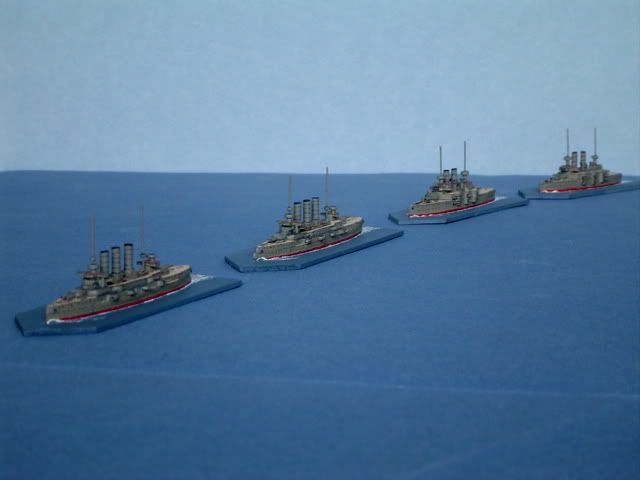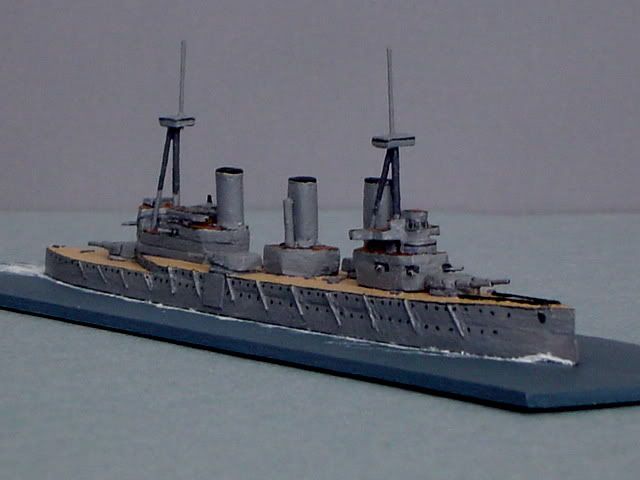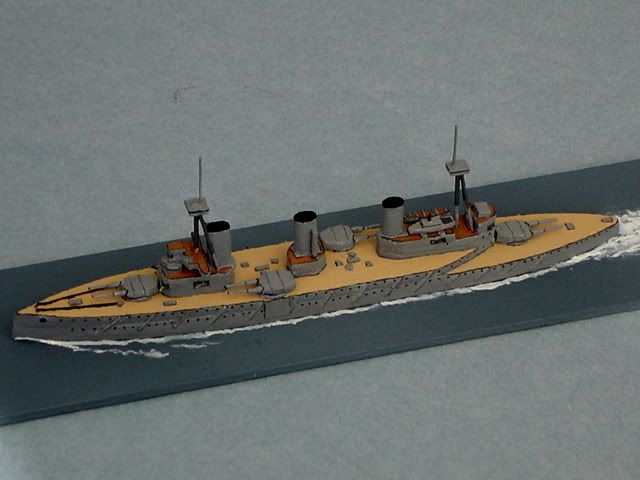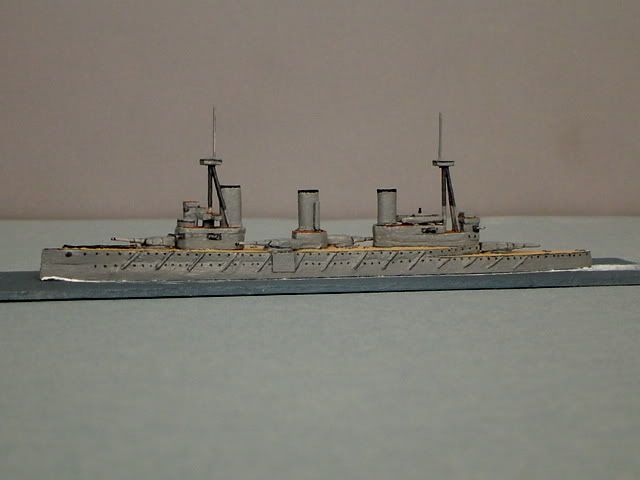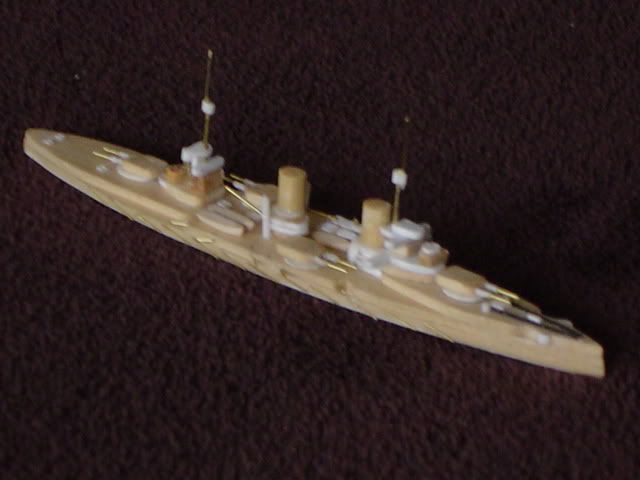In part Part 2 of the series about the Minifigs WW1 ships, I raised a few questions about the origin of these unique models. Certain things were just not adding up:
* Why do I have ships which aren't on the catalog list ?
* Why the inclusion of older ships which would have had minimum fighting value by 1914 ?
* What do the Roman numeral ID's on the hulls signify ?
* How could Minifigs as vendor not be able to correctly identify all of their ships (i.e., "old turret battleship" when there are none) ?
* What modern wargames company (even ca. 1970's) would tolerate such a casual approach towards maintaining a consistent scale ?
* And what 1970's sculptor would choose to work in such an antique style ?
All of these questions remained unanswered, my internet queries shed no light on it. By coincidence, approaching the issue from a different path has lead to an answer. Please bear with me on this, as the story will be rather lengthy, but I think one worth telling.
The first break resulted from looking for information about WW1 identification models of the German High Seas fleet produced for the US Navy by the R.E. Boucher company. I was interested in these with regard to scratch building German ships in a simplified style consistent with the Minifigs ships. My search led to a sample from a paper by Fred. A. Douris titled
Ship Models for the Military. While there wasn't much detail about the Boucher German ships, a brief introduction to the topic mentioned models created for the Fred T. Jane Naval Wargame.
http://daleypublishing.com/SMFTM_sample.pdf
Suffice it to say the author states that lead warships were produced in the early 1900's for the
Jane Naval Wargame by the Bassett-Lowke company. That's interesting as I thought the prevailing wisdom concerning the Jane's ships seems to be that they were crude wooden models, quite tubby in appearance. And probably the prototypes were. But it makes sense; once the game was put into commercial production, why wouldn't a robust, attractive and more readily mass-produced sort of model be a better option when selling the game to the general public ?
For more information about Bassett-Lowke, I turned to Wikipedia (bold fonts my own)
http://en.wikipedia.org/wiki/Bassett-Lowke
Bassett-Lowke was...known for model trains, [but] it had a long history of contracting manufacture of model ships. Before and during World War One, the company contracted with a firm referred to in Bassett-Lowke catalogues as "B M C". There is confusion as to what the initials stood for: internet sellers have identified it as "Birmingham Metal Company" or "Brighton Model Company".
The collaboration between Bassett-Lowke and B M C produced a model fleet of every class in the British navy from 1885 through 1916 including tugs, troop ships and the royal yacht. The models were formed using hollowcast lead with the wire masts cast into the hulls. The models were painted and issued in numbered sets, paper flags with each set to be cut out and applied. The scale was described in the catalogue as "one inch equals eighteen hundred inches". While the models were rudimentary by later standards, every class of vessel was easily recognisable by the funnels and guns and masts. The series may have been discontinued during World War One since the last vessels were of ships commissioned about 1916. Possibly the series was abandoned due to rationing of metal.
Later copies appear for sale on the internet. These can be distinguished from the originals, which were hollowcast. Two copies are common, the first cast in solid lead with no wire masts and large numbers inscribed on the bottom. The second are in potmetal and represent three ship classes from the original sets: the King Edward VII, Lord Nelson and Swiftsure.
The reference to BMC made the next step fairly obvious. A web search didn't reveal much, tried images and struck gold. Vectis auction, 2008. Bingo !
Images and text from Vectis Auctions Ltd.
http://www.vectis.co.uk/page/viewauctionlots.aspx?auctionid=43&dayno=1§ion=0&Start=1320
Lot 1324: BMC Series of the World's Warships slush cast lead Waterline Ships. This being box No.12 containing British Ships HMS Implacable, HMS Lancaster, HMTBD Fury and Submarine AT. Box also contains a number of other BMC Ships including Cruisers, Destroyers, Torpedo Boat, a Liner, 2 Freighters and a Hospital Ship.
And from my collection:
Lot 1325: BMC Series of World Ships in Miniature being box No.8 containing British Ships HMS London, HMS Bulwark, HMTBD Goldfish and Submarine A9 along with a number of other BMC Ships including Cruisers, Destroyers, Motor Torpedo Boats and other smaller Naval Craft finished in battleship grey or black and generally Good Plus in Fair original box with picture of flotilla to lid. Extremely rare.
My collection:
In short, if the ships look like 100 year old designs, it's because they are. Given that my own examples are hollowcast, it seems that my project has been a case of "colorizing Citizen Kane" after all. Oh, well. Damn the antiquitarian values, full speed ahead !































